Home>diy>Building & Construction>What Is A Career In Architecture & Construction?
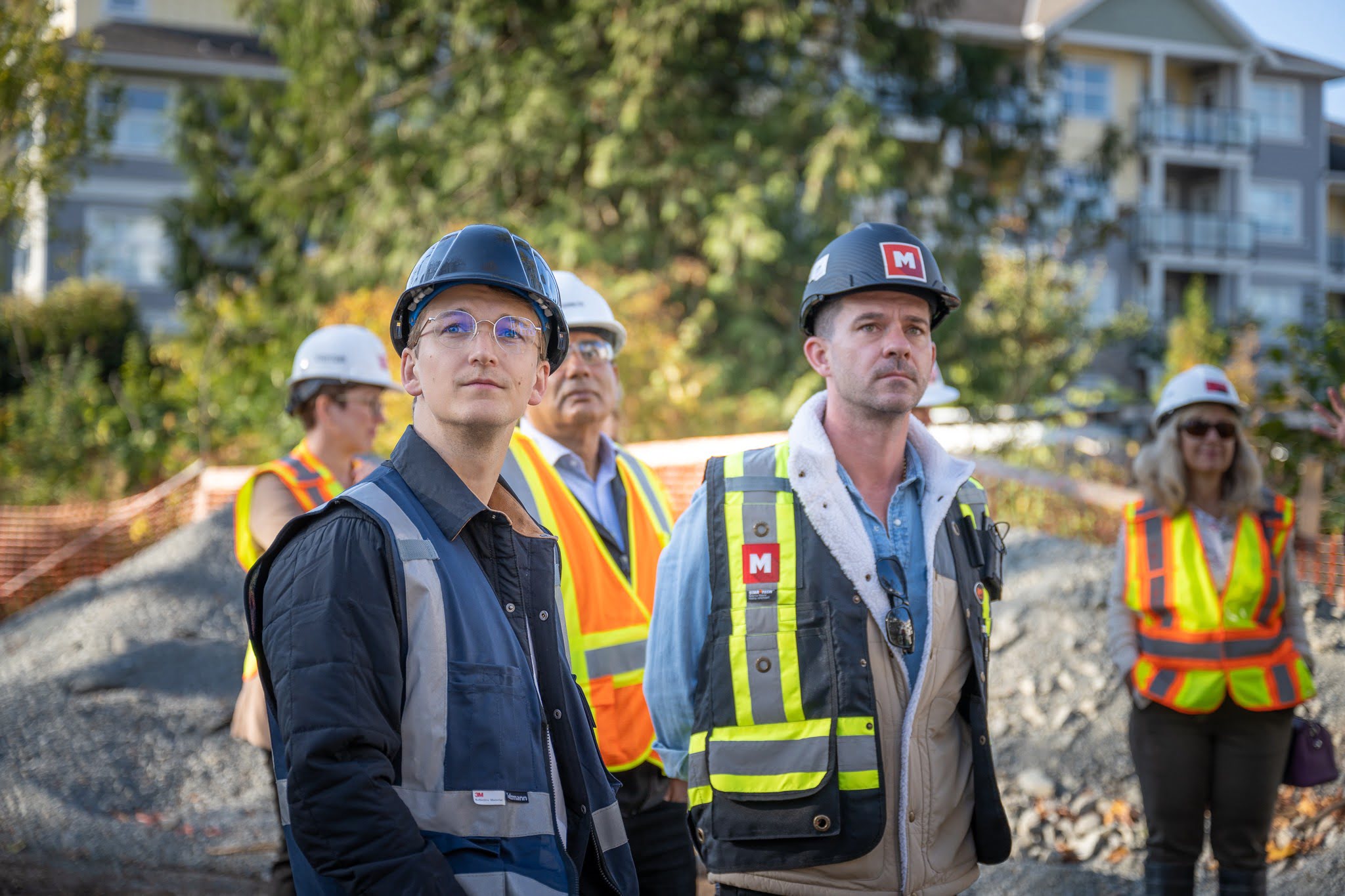

Building & Construction
What Is A Career In Architecture & Construction?
Modified: December 7, 2023
Explore the exciting world of architecture and construction careers, and learn how the building construction industry can be your stepping stone to a successful professional journey.
(Many of the links in this article redirect to a specific reviewed product. Your purchase of these products through affiliate links helps to generate commission for Storables.com, at no extra cost. Learn more)
Introduction
Welcome to the fascinating world of architecture and construction! If you have ever looked at a soaring skyscraper or marveled at the intricate details of a historic building, you may have wondered about the professionals behind these incredible structures. Architecture and construction are interconnected disciplines that play a crucial role in shaping our built environment.
An architectural career involves the design and planning of buildings, while a construction career focuses on the actual implementation of those designs. Both fields require a deep understanding of building codes, materials, and construction techniques. While there are similarities between the two, there are also distinct differences in terms of education, job roles, and responsibilities.
In this article, we will explore the world of architecture and construction, highlighting their similarities and differences, the education and training required, job roles and responsibilities, employment opportunities, salaries, and the challenges and future outlook in these careers.
Whether you are considering a career in architecture or construction, or simply have a curiosity about the field, this article will provide you with valuable insights into the exciting and rewarding world of building design and construction.
Key Takeaways:
- Architecture and construction careers offer diverse opportunities, combining creativity, technical expertise, and a commitment to lifelong learning. Embracing challenges and emerging trends is essential for a fulfilling and rewarding career in these dynamic fields.
- The future outlook for architecture and construction is promising, with increasing demand for sustainable designs, technological integration, and resilient infrastructure. Adapting to emerging trends and acquiring new skills will be key to thriving in these industries.
Read more: What Careers Use 3D Modeling
Architectural Career
An architectural career offers a unique blend of creativity, technical skills, and problem-solving abilities. Architects are responsible for creating functional and aesthetically pleasing spaces that meet the needs of their clients while also adhering to safety and sustainability standards.
Architects work on a wide range of projects, including residential buildings, commercial complexes, educational institutions, healthcare facilities, and public spaces. They collaborate with clients, engineers, contractors, and other professionals to develop innovative design concepts and see them through to construction.
To embark on an architectural career, aspiring architects typically need to earn a professional degree in architecture from an accredited institution. This typically involves a five-year Bachelor of Architecture (B.Arch) program or a combination of a four-year Bachelor’s degree in architecture and a two-year Master’s program.
Throughout their education, architects learn core design principles, construction techniques, building science, structural engineering, and environmental sustainability. They also develop skills in using computer-aided design (CAD) software and modeling tools to create detailed drawings and 3D visualizations.
Once they have completed their education, aspiring architects must gain practical experience through an internship or apprenticeship program. This hands-on training allows them to learn from experienced professionals and gain a deeper understanding of the practical aspects of the profession.
Upon completion of their education and practical training, architects must pass the Architectural Registration Exam (ARE) to become licensed professionals. Licensure is a mandatory requirement to practice architecture and is regulated by state licensing boards. Architects may also choose to pursue additional certifications, such as LEED (Leadership in Energy and Environmental Design) accreditation, which demonstrates their knowledge in sustainable design.
In terms of job roles and responsibilities, architects are involved in every stage of a building project. They start by conducting site evaluations and gathering relevant data, followed by developing design concepts and creating detailed drawings. Architects collaborate with clients to understand their vision and requirements, making adjustments and modifications as necessary.
Once the design is finalized, architects work closely with engineers and contractors to ensure that the construction phase aligns with the approved design. They monitor the progress of the construction process, resolve any design-related issues that may arise, and ensure compliance with building codes and regulations.
In summary, an architectural career is a dynamic and rewarding profession that combines creativity, technical expertise, and a passion for creating functional and visually appealing spaces. Architects have the opportunity to shape the built environment, leaving a lasting impact on the communities they serve.
Construction Career
A construction career encompasses the practical implementation of architectural designs, bringing them to life through the physical construction of buildings and infrastructure. Construction professionals are responsible for coordinating and managing various aspects of the construction process, ensuring that projects are completed on time, within budget, and to the desired quality standards.
Construction covers a wide range of projects, including residential, commercial, industrial, and infrastructure developments. Construction professionals work closely with architects, engineers, and other stakeholders to turn design plans into reality, overseeing the entire construction process from start to finish.
To pursue a construction career, individuals can choose from multiple pathways. Some opt for a degree in construction management, which provides a comprehensive understanding of construction techniques, project management principles, cost estimation, and contract administration. Others may gain practical experience through apprenticeship programs, working their way up from entry-level positions to become skilled tradespeople or construction supervisors.
Construction professionals need to be well-versed in building codes, safety regulations, and quality control procedures. They must be able to interpret architectural and engineering drawings, coordinate subcontractors and suppliers, and effectively manage resources, schedules, and budgets.
While technical skills and knowledge are crucial in the construction industry, soft skills such as communication, problem-solving, leadership, and teamwork are equally important. Construction professionals often work in high-pressure environments with tight deadlines and multiple stakeholders, requiring excellent organizational and interpersonal skills to ensure smooth project execution.
Job roles in construction can vary depending on the experience and qualifications of individuals. Entry-level positions may include construction laborers, where individuals assist with various tasks on construction sites such as material handling, site cleanup, and basic construction activities under the guidance of more experienced workers.
Skilled tradespeople such as carpenters, electricians, plumbers, and masons are in high demand in the construction industry. These professionals have specialized expertise and perform specific construction tasks related to their trade.
Construction supervisors or project managers oversee the day-to-day operations on construction sites, ensuring that work is carried out according to plans and specifications. They manage labor, materials, and equipment, coordinate subcontractors, and maintain effective communication with all parties involved in the project.
Construction careers also offer opportunities for specialization, such as in green construction or sustainable building practices. As sustainability becomes increasingly important, construction professionals with knowledge of energy-efficient building techniques and materials are in high demand.
Overall, a construction career offers a dynamic and hands-on experience, combining technical expertise, project management skills, and the satisfaction of seeing tangible results. Construction professionals are essential in bringing architectural visions to life and shaping the physical infrastructure that surrounds us.
Similarities between Architecture and Construction
Although architecture and construction are distinct fields, they share several similarities in their focus and collaborative nature. Here are some key similarities between architecture and construction:
1. Interdisciplinary Collaboration: Both architecture and construction require close collaboration with various professionals and stakeholders. Architects and construction professionals work together to ensure that designs are translated into physical structures in a practical and efficient manner.
2. Focus on Building Codes and Regulations: Both architecture and construction professionals need to have a thorough understanding of building codes, regulations, and industry standards. They ensure that projects comply with safety, accessibility, and environmental requirements.
3. Construction Techniques and Materials: Architects and construction professionals need to be knowledgeable about construction techniques and materials. They need to understand the properties and limitations of different materials and employ appropriate construction methods to ensure durability and functionality.
4. Problem-Solving Skills: Both fields require problem-solving skills to address design challenges and overcome construction-related obstacles. Architects and construction professionals must think critically and find innovative solutions to ensure the successful completion of projects.
5. Time and Budget Management: Architecture and construction professionals are responsible for managing project schedules and budgets. They must ensure that projects stay on track and within the allocated resources to meet client expectations.
6. Emphasis on Sustainability: Today, both architecture and construction prioritize sustainability and green building practices. Whether it’s incorporating energy-efficient designs or using eco-friendly materials, professionals in both fields strive to create environmentally conscious and sustainable structures.
7. Client Collaboration: Architects and construction professionals both work closely with clients to understand their needs, preferences, and budget constraints. They collaborate throughout the design and construction process, ensuring that the final product meets the client’s vision and requirements.
8. Quality Control: Both architecture and construction professionals are committed to maintaining quality standards. They conduct inspections and quality checks throughout the construction process to ensure that the final product adheres to specifications and industry standards.
These similarities highlight the interdependence of architecture and construction, emphasizing the synergy required to bring design concepts to life. The collaboration between architects and construction professionals is essential for successful project execution.
Differences between Architecture and Construction
While architecture and construction are closely related fields, there are distinct differences in their focus, skill sets, and responsibilities. Here are some key differences between architecture and construction:
1. Design vs. Implementation: The primary difference between architecture and construction lies in their core focus. Architecture is primarily concerned with the design and conceptualization of buildings. Architects create plans, drawings, and specifications that outline the overall vision, aesthetic elements, and functional aspects of the structure. Construction, on the other hand, involves the physical realization of those designs, encompassing the actual building and assembly of the structure.
2. Creative vs. Technical Skills: While there is an overlap in skills, architecture leans more towards the creative and artistic aspects of building design. Architects utilize their creativity, artistic sensibility, and spatial awareness to develop visually appealing and functional spaces. Construction professionals, on the other hand, require technical skills and practical knowledge of construction techniques, codes, and regulations to execute the architect’s design in a practical and efficient manner.
3. Education and Training: The educational requirements for architecture and construction careers differ. Architects typically undergo a longer and more specialized educational path, obtaining a professional degree in architecture. This includes a combination of undergraduate and graduate studies focusing on design principles, building science, and architectural history. Construction professionals often pursue degrees in construction management or gain practical experience through apprenticeship programs.
4. Professional Licensure: Architects are required to obtain a professional license to practice, regulated by state licensing boards. The licensure process typically includes completing the necessary education, gaining practical experience, and passing the Architectural Registration Exam (ARE). Construction professionals, depending on their specific trade or role, may require licensure or certifications specific to their field, such as electrician or plumber licenses.
5. Salary and Career Progression: Architectural careers typically offer higher earning potential compared to construction careers. Architects with experience and established professional practices can earn higher salaries due to their specialized skills and expertise in design. Construction professionals’ salaries can vary based on their trade or the level of responsibility they hold within the construction management hierarchy.
6. Job Roles and Responsibilities: Architects are primarily responsible for the design, planning, and coordination of a project. They collaborate with clients, engineers, and other professionals to create the overall vision and ensure that design goals are met. Construction professionals, on the other hand, are responsible for executing the architectural design. They oversee construction activities, manage labor and resources, and ensure that the project is completed according to specifications and within budget and timeline constraints.
7. Longevity of Involvement: Architects are involved in a project from its inception through completion. They provide input during the design phase, oversee the construction process, and ensure that the final result aligns with the original vision. Construction professionals are typically involved in the physical construction phase of a project and may have less involvement in the earlier design stages.
8. Focus on Aesthetics vs. Practicality: Architects prioritize the aesthetic and artistic elements of a building design while also considering functionality and client requirements. They aim to create visually appealing spaces that inspire and evoke emotions. Construction professionals focus more on the practical aspects of turning design plans into tangible structures. They ensure the efficient execution of the design, taking into account structural integrity, safety standards, and construction logistics.
Understanding these differences is essential for individuals interested in pursuing careers in architecture or construction. Each field offers unique opportunities and challenges, and individuals can choose a path based on their interests, skills, and aspirations.
Read more: Why Is Civil Engineering A Good Career
Education and Training for Architecture and Construction Careers
Earning the necessary education and training is vital for individuals aspiring to pursue careers in architecture or construction. Both fields require a solid foundation of knowledge and practical skills to succeed. Let’s explore the education and training requirements for these careers:
Architecture:
To become an architect, aspiring professionals need to complete a professional degree in architecture from an accredited institution. Typically, this involves completing a five-year Bachelor of Architecture (B.Arch) program or a four-year Bachelor’s degree in architecture followed by a two-year Master’s program.
Architecture education covers various disciplines, including design theory, architectural history, building science, construction technology, structural systems, and sustainability. Students learn to use computer-aided design (CAD) software and other visualization tools to create detailed drawings and virtual representations of their designs.
Additionally, aspiring architects gain hands-on experience through internships or apprenticeships, working under the guidance of experienced professionals. This practical training provides exposure to real-world architectural projects and helps develop critical skills in teamwork, communication, and project management.
Upon completion of their education and practical training, aspiring architects must pass the Architectural Registration Exam (ARE) to become licensed professionals. The ARE is a comprehensive exam that assesses candidates’ knowledge and understanding of various architectural aspects, including design, construction documents, building systems, and professional practice.
Construction:
The educational pathways for construction careers can vary. Some individuals choose to pursue a degree in construction management or construction engineering. These programs provide a broad understanding of construction principles, project management, cost estimation, building codes, contracts, and safety protocols.
Alternatively, individuals can gain practical experience through apprenticeship programs or entry-level construction positions. Apprenticeships provide a combination of classroom instruction and on-the-job training, allowing individuals to learn the trade under the guidance of experienced professionals. Apprentices gradually acquire the skills and knowledge required for higher-level positions in construction.
Construction professionals may also choose to pursue certifications in specific trades, such as electrician, plumber, carpenter, or mason. These certifications require individuals to complete specific training programs and pass practical and theoretical assessments to demonstrate their competence in their chosen field.
Continuing education plays a vital role in both architecture and construction careers. Professionals in these fields need to stay updated with the latest industry regulations, technological advancements, and sustainable practices. They can participate in workshops, seminars, and professional development courses to enhance their skills and expand their knowledge base.
In summary, architecture and construction careers require a combination of formal education, practical experience, and ongoing professional development. The depth and duration of education and training may vary, but both fields demand a commitment to continuous learning and staying abreast of industry advancements to excel in these dynamic and evolving professions.
Consider gaining practical experience through internships or apprenticeships to supplement your education in architecture and construction. This hands-on experience can provide valuable skills and industry connections.
Job Roles and Responsibilities in Architecture and Construction
Architecture and construction involve a wide range of job roles and responsibilities, each playing a crucial part in the successful realization of building projects. Let’s explore some of the key job roles and their responsibilities in both fields:
Architecture:
1. Architect: Architects are responsible for the design and planning of buildings. They work closely with clients to understand their needs and objectives, develop design concepts, create detailed drawings and specifications, and ensure that the design meets building codes and regulations. They collaborate with engineers, contractors, and other stakeholders to oversee the construction process, resolve design-related issues, and ensure the project’s successful completion.
2. Architectural Designer: Architectural designers assist architects in creating design concepts and developing detailed drawings. They utilize computer-aided design (CAD) software and modeling tools to visualize architectural plans and create 2D and 3D representations of buildings. They collaborate with architects to refine designs, make adjustments based on client feedback, and incorporate sustainable design principles into the project.
3. Project Manager: Project managers in architecture oversee the overall coordination and management of building projects. They ensure that projects are executed within the allocated budget, timeline, and quality standards. Project managers organize and oversee various aspects such as scheduling, resource management, team coordination, and client communication. They act as a bridge between clients, architects, engineers, contractors, and other stakeholders to ensure smooth project execution.
4. Interior Designer: Interior designers focus on creating functional and aesthetically pleasing interior spaces. They consider factors such as space planning, material selection, lighting, color schemes, and furnishings to create environments that meet the client’s requirements and reflect their style. Interior designers collaborate with architects to integrate the interior design seamlessly with the overall architectural concept.
Construction:
1. Construction Manager: Construction managers are responsible for overseeing and coordinating all aspects of the construction process. They plan and schedule construction activities, manage resources and budgets, hire and supervise subcontractors, and ensure that projects comply with building codes and safety standards. Construction managers communicate with clients, architects, and other stakeholders to address any issues that may arise during construction and ensure successful project completion.
2. Site Supervisor: Site supervisors monitor construction activities on-site and ensure that work is performed according to plans, specifications, and safety regulations. They supervise construction workers, manage subcontractors, and ensure that materials and equipment are available as needed. Site supervisors are responsible for maintaining a safe working environment and resolving any construction-related issues that may arise during the course of the project.
3. Estimator: Estimators are responsible for assessing the costs of construction projects. They analyze project drawings and specifications, calculate material and labor costs, and prepare accurate and detailed estimates. Estimators work closely with architects, contractors, and suppliers to determine the most cost-effective solutions and create comprehensive project budgets.
4. Building Inspector: Building inspectors ensure that construction projects comply with building codes, zoning regulations, and safety standards. They conduct inspections at various stages of construction to verify adherence to approved plans, check the quality of materials and workmanship, and issue permits as required. Building inspectors help identify and resolve any code violations or safety concerns during the construction process.
In summary, architecture and construction offer diverse job roles that contribute to the successful implementation of building projects. Whether it’s designing, coordinating, managing, or inspecting, each role plays a unique part in creating functional, aesthetically pleasing, and safe structures.
Job Market and Employment Opportunities in Architecture and Construction
The job market for architecture and construction professionals is influenced by various factors, including economic conditions, population growth, urban development, and infrastructure needs. While the job market may fluctuate, there are generally good employment opportunities in both fields. Let’s explore the job market and employment opportunities in architecture and construction:
Architecture:
The demand for architects is closely tied to the growth and development of the construction industry. During periods of economic growth and increased construction activity, there is typically a higher demand for architectural services. Architectural firms, design studios, and government agencies are the primary employers of architects.
Employment opportunities for architects can vary by region, as architecture is heavily influenced by local construction projects and planning initiatives. Urban areas often offer more opportunities due to higher population concentrations and greater infrastructure development. Additionally, sustainability and green building practices have created new opportunities for architects specializing in environmentally conscious design.
Architects may also choose to establish their own practices, offering architectural services directly to clients. This allows for greater flexibility and the ability to work on a variety of projects, from residential to commercial or institutional.
Construction:
The job market for construction professionals is closely tied to construction activity and infrastructure development. Various factors such as government investments, public-private partnerships, and private sector initiatives impact employment in the construction industry.
Construction employment opportunities are diverse and cover a range of roles and trades. Skilled tradespeople, such as carpenters, electricians, plumbers, and masons, are in constant demand due to the need for specialized expertise in construction projects. Construction management positions, including project managers, site supervisors, and estimators, also offer promising employment prospects.
Employment opportunities in construction can vary depending on geographic location and the types of construction projects being undertaken. Urban areas with significant population growth and infrastructure development may offer more employment opportunities. Megaprojects, such as large-scale commercial developments, transportation infrastructure, and public facilities, can create substantial job opportunities for construction professionals.
In recent years, there has been a growing focus on sustainability and green construction practices. As a result, there is an increasing demand for construction professionals with knowledge of energy-efficient building techniques and sustainable materials.
Overall, the job market for architecture and construction professionals is influenced by economic factors and construction activity levels. While fluctuations may occur, the demand for skilled architects and construction professionals remains resilient, providing employment opportunities in various sectors and specializations.
Salaries and Benefits in Architecture and Construction
Salaries and benefits in architecture and construction can vary depending on factors such as experience, location, specialization, and the size and nature of the employer. While specific salary figures may vary, both fields offer competitive compensation packages. Let’s explore the salaries and benefits in architecture and construction:
Architecture:
The salaries of architects can vary based on several factors, including their level of experience, geographic location, firm size, and project complexity. According to the U.S. Bureau of Labor Statistics (BLS), the median annual wage for architects in 2020 was $82,320.
Entry-level architectural positions may start with salaries below the median figure, while experienced and highly skilled architects often earn higher salaries. Architects employed by larger architectural firms or government agencies may have access to additional benefits such as healthcare coverage, retirement plans, and professional development opportunities.
Architects with their own practices have the potential to earn higher salaries as their reputation and client base grow. However, running a successful architectural practice often involves additional responsibilities and overhead costs.
Construction:
Salaries in the construction industry vary depending on the specific role, level of experience, geographic location, and the size and type of construction projects. The BLS reports that the median annual wage for construction managers, as of 2020, was $97,180.
Skilled tradespeople, such as carpenters, electricians, plumbers, and masons, earn salaries that can range from moderate to high, depending on their experience and specialization. According to the BLS, the median annual wage for construction trades workers ranged from approximately $35,000 to $65,000 in 2020.
Construction professionals often benefit from union representation, providing additional benefits such as health insurance, retirement plans, and job security. They may also have access to training and apprenticeship programs that enhance their skills and career advancement opportunities.
Both architecture and construction professionals may enjoy additional benefits such as paid time off, flexible work hours, and opportunities for professional development. Some employers also offer bonuses or profit-sharing programs based on individual or team performance.
It is important to note that salaries and benefits can vary significantly based on individual circumstances and industry conditions. Factors such as economic conditions, the size and financial health of organizations, and the level of demand for specific skills can influence compensation in both architecture and construction.
Additionally, it is worth considering that salaries can increase over time as professionals gain experience and develop their expertise. Continued professional growth, specialization in niche areas, and staying updated with emerging technologies and trends can also contribute to increased earning potential.
Ultimately, individuals in architecture and construction can find rewarding careers that offer competitive salaries and benefits, providing financial stability and opportunities for growth and advancement.
Read more: What Is Pre-Construction In Construction
Challenges and Future Outlook for Architecture and Construction Careers
The architecture and construction industries are dynamic and ever-evolving, presenting both opportunities and challenges for professionals in these fields. Understanding the challenges and future outlook is crucial for individuals pursuing careers in architecture and construction. Let’s explore some of the key challenges and the future outlook for these careers:
Challenges:
1. Economic Volatility: The architecture and construction industries are strongly influenced by economic conditions. Economic downturns or fluctuations can impact construction activity and project budgets, affecting job opportunities for architects and construction professionals. Adapting to changing market conditions and finding ways to navigate economic uncertainties is a challenge in these industries.
2. Technological Advancements: The increasing integration of technology in architecture and construction presents both opportunities and challenges. While technological advancements streamline processes and enhance efficiency, they also require professionals to continually update their skills and stay abreast of emerging tools, software, and digital workflows. Adapting to new technologies and adopting Building Information Modeling (BIM) and virtual reality tools are some of the challenges faced by professionals in these fields.
3. Sustainability and Green Building: Meeting the growing demand for sustainable and environmentally friendly construction practices is a challenge for both architects and construction professionals. The industry is increasingly focused on reducing carbon footprints, optimizing energy efficiency, and utilizing eco-friendly materials. Staying up to date with green building practices and finding innovative solutions for sustainable design and construction pose challenges but are essential for future career growth.
4. Globalization and Cultural Diversity: As projects become more international in nature, architects and construction professionals face the challenge of navigating cultural diversity and incorporating local regulations and practices. Understanding regional design preferences, construction techniques, and building codes in a global context is essential for professionals who work on international projects.
Future Outlook:
1. Sustainable Design and Construction: The focus on sustainability and green building will continue to grow in the future. There will be an increasing demand for professionals who can design and construct energy-efficient and environmentally friendly buildings. Skills in sustainable design and construction practices will be highly valued, opening up new career opportunities.
2. Technological Integration: The integration of advanced technologies such as BIM, virtual reality, and automation will transform the architecture and construction industries. Professionals who can adapt to and leverage these technologies will be in high demand. Embracing digital workflows and mastering 3D modeling and visualization tools will become essential skills for future success.
3. Urbanization and Infrastructure Development: Rapid population growth and urbanization trends create a demand for professionals who can design and build resilient cities and infrastructure. Architects and construction professionals involved in urban planning, transportation systems, and sustainable urban development will have promising career prospects.
4. Collaborative and Integrated Project Delivery: Future projects will require enhanced collaboration and integrated project delivery methodologies. Professionals who can effectively communicate and collaborate with multidisciplinary teams will be sought after. Building strong relationships with consultants, contractors, and stakeholders and embracing collaborative project management approaches will be critical for success.
5. Resilience and Disaster Preparedness: Climate change and the increasing frequency of natural disasters call for professionals who can design and construct resilient buildings and infrastructure. Architects and construction professionals who specialize in disaster-resistant designs and resilient construction techniques will play a crucial role in mitigating the impact of future disasters.
While challenges exist, the future outlook for architecture and construction careers is promising. The demand for skilled professionals in sustainable design, technological integration, and urban development will continue to grow. Embracing emerging trends, acquiring new skills, and staying adaptable will be key to thriving in these industries.
Conclusion
The worlds of architecture and construction are intertwined, each playing a vital role in shaping the built environment we live in. A career in architecture offers the opportunity to unleash creativity, conceptualize innovative designs, and bring them to life through collaboration with engineers and construction professionals. On the other hand, a career in construction focuses on turning architectural visions into tangible structures, requiring technical expertise, project management skills, and attention to detail.
Throughout this article, we explored the similarities and differences between architecture and construction, highlighting the interdisciplinary collaboration required in both fields. We discussed the educational pathways and training necessary for individuals pursuing careers in these industries, emphasizing the importance of continuous learning and professional development.
We delved into the various job roles and responsibilities within architecture and construction, emphasizing the importance of teamwork, problem-solving, and adherence to regulations and quality standards. We also examined the job market and employment opportunities, recognizing that economic conditions and construction activity influence career prospects in these fields.
Salaries and benefits in architecture and construction were discussed, acknowledging that compensation can vary based on factors such as experience, location, and specialization. We also explored the challenges and future outlook for both industries, recognizing the impact of technological advancements, sustainability, and globalization on architecture and construction careers.
In conclusion, careers in architecture and construction offer diverse opportunities for individuals passionate about shaping the built environment. Both fields require a combination of creativity, technical skills, and a commitment to lifelong learning. As the world evolves, the demand for sustainable designs, advanced technologies, and resilient infrastructure will drive the future of these industries.
Whether you choose a path in architecture, construction management, or a skilled trade, embracing the challenges and opportunities of these dynamic fields can lead to a fulfilling and rewarding career. Aspiring professionals should stay informed, adapt to changing trends, and seize opportunities to make their mark on the architectural and construction landscape.
Frequently Asked Questions about What Is A Career In Architecture & Construction?
Was this page helpful?
At Storables.com, we guarantee accurate and reliable information. Our content, validated by Expert Board Contributors, is crafted following stringent Editorial Policies. We're committed to providing you with well-researched, expert-backed insights for all your informational needs.

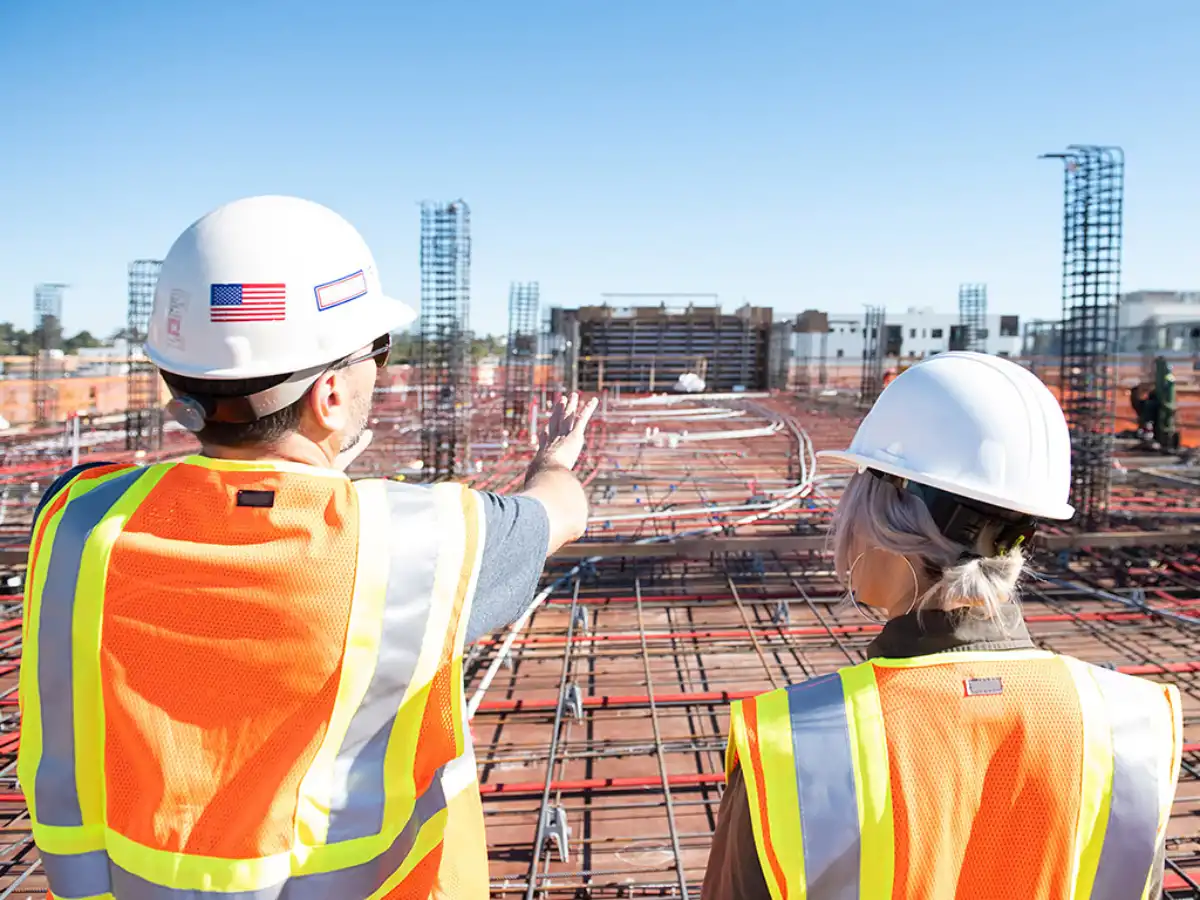

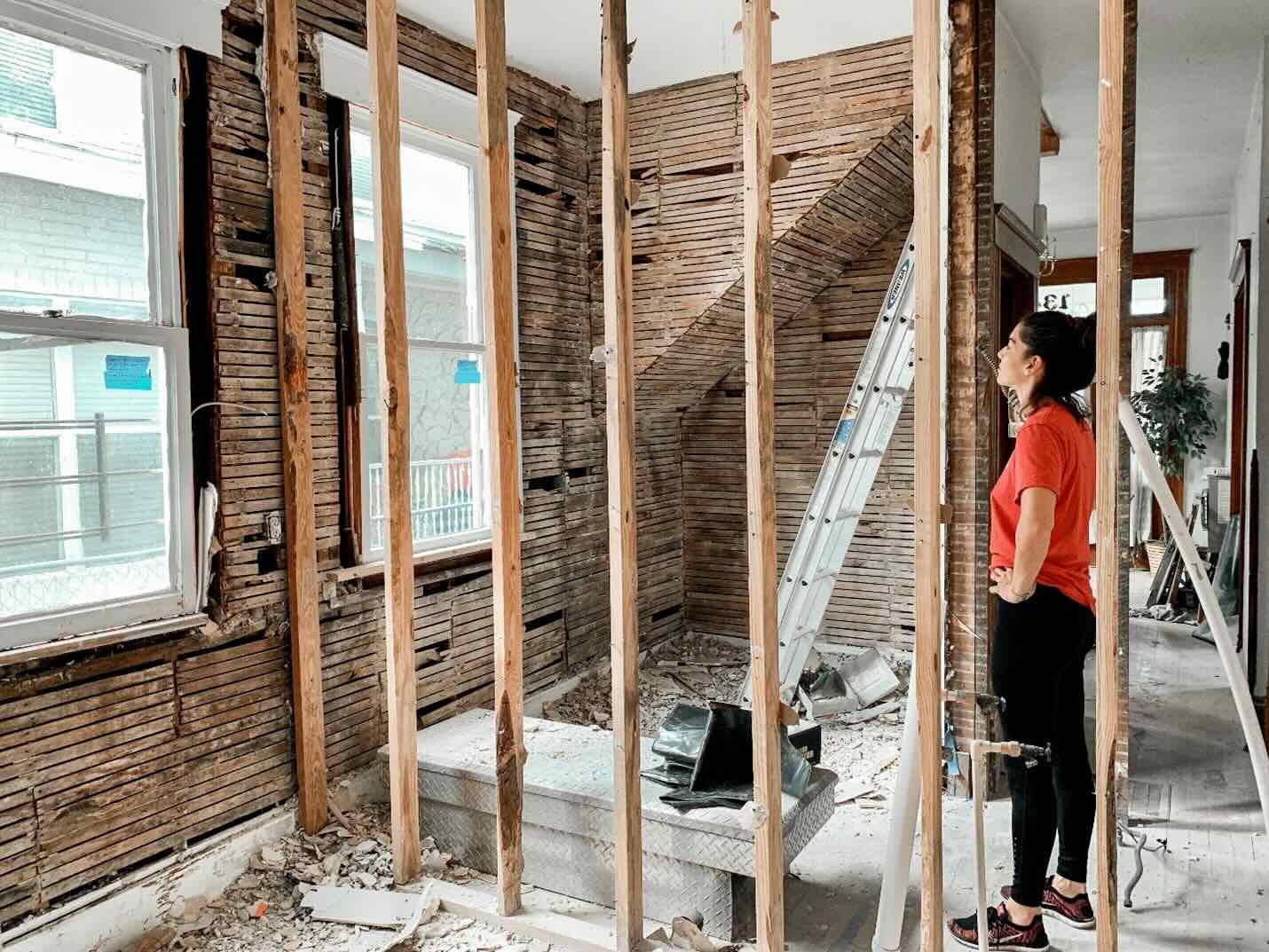
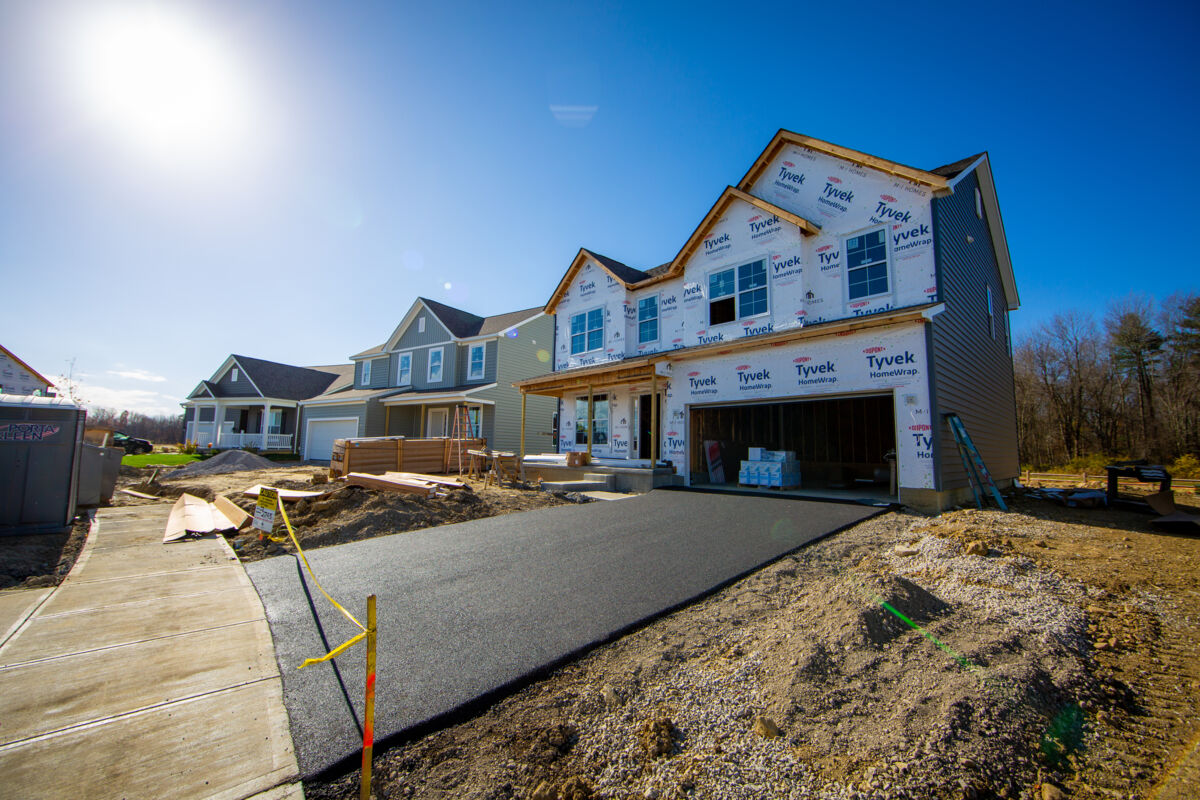

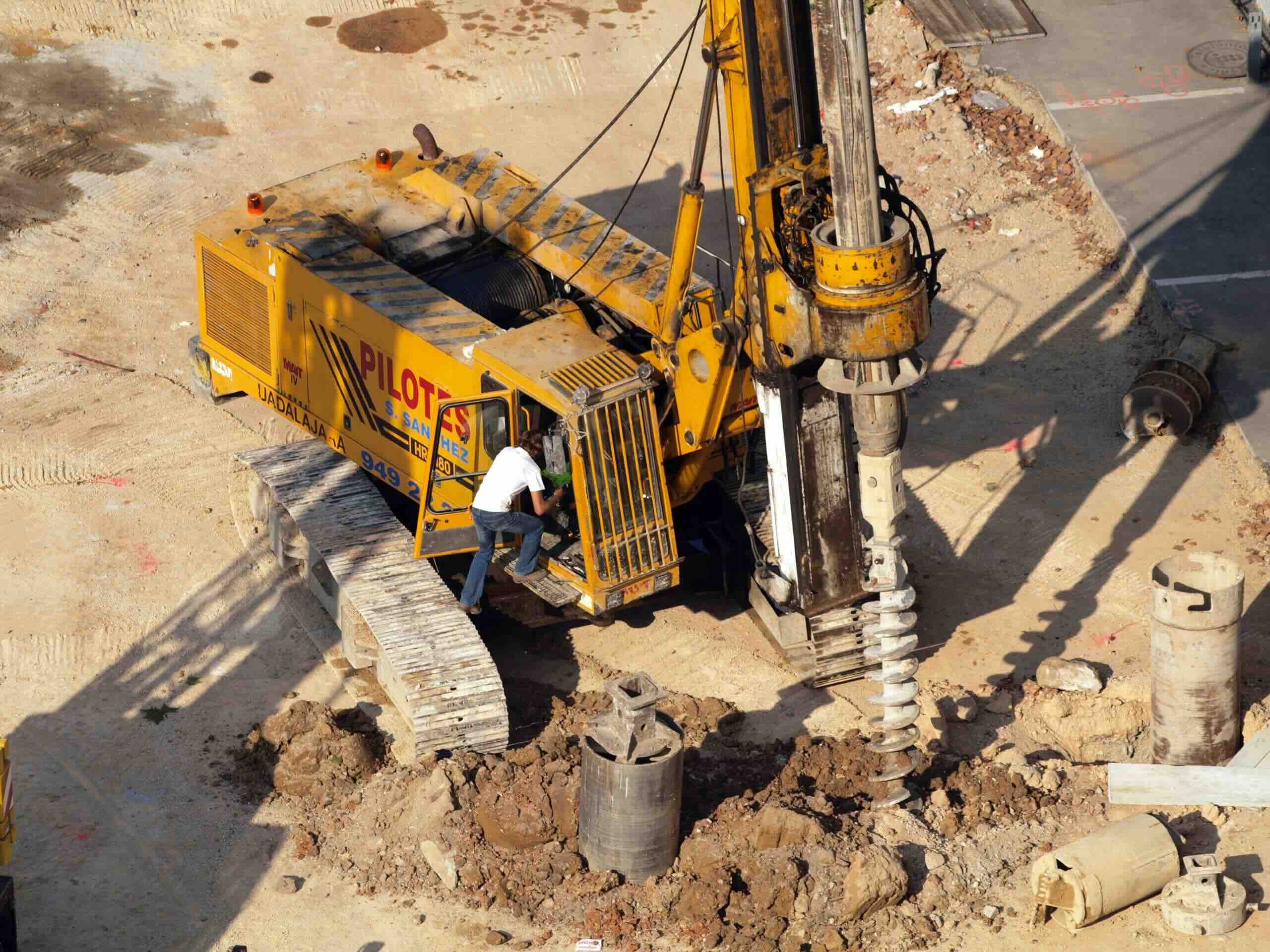

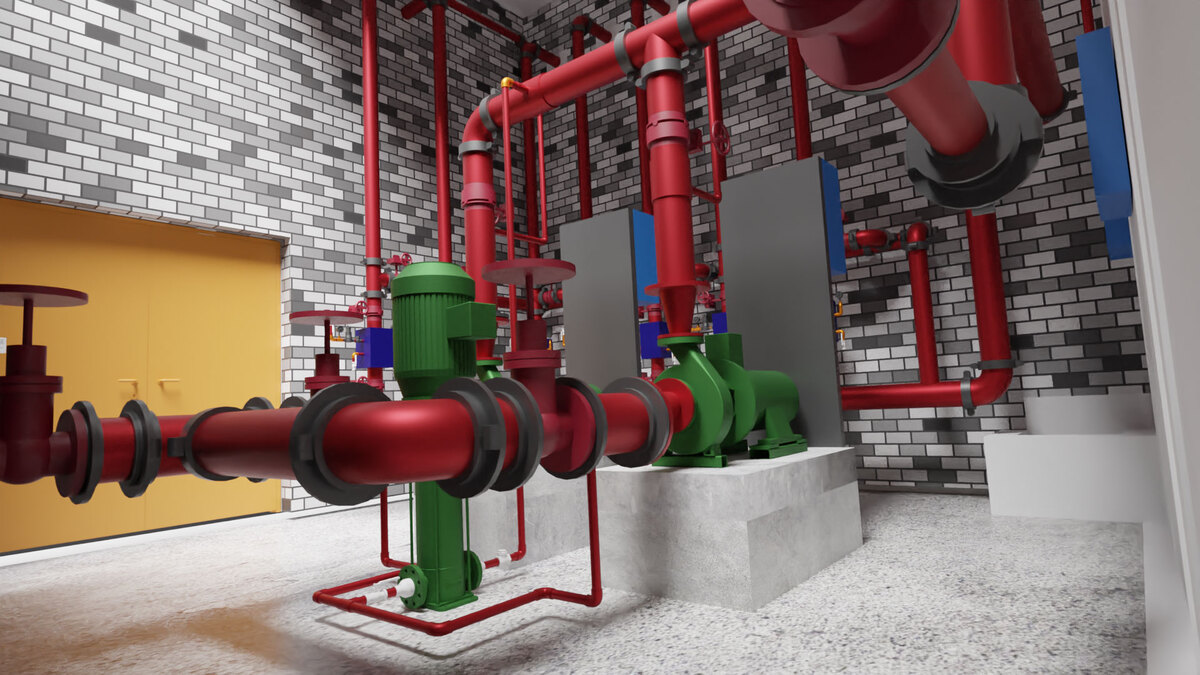
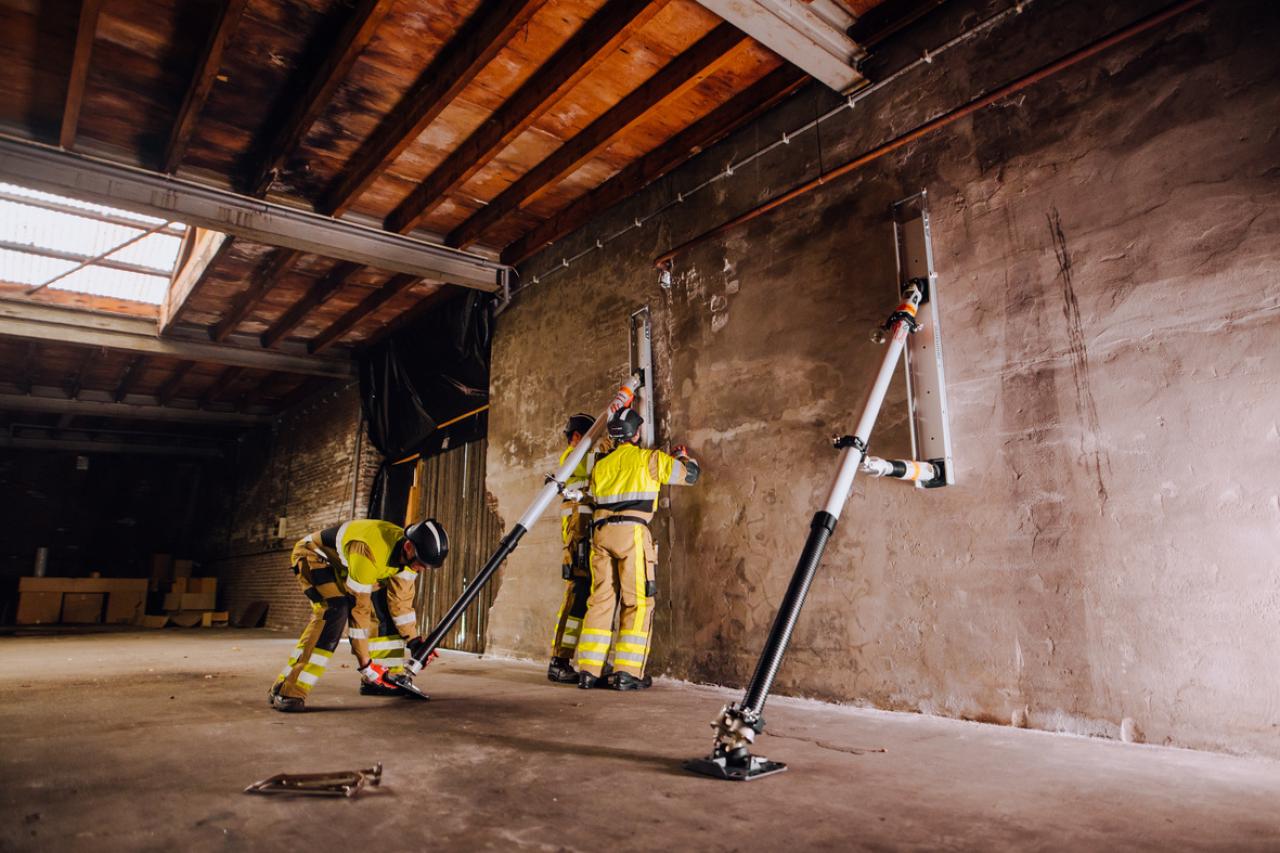




0 thoughts on “What Is A Career In Architecture & Construction?”